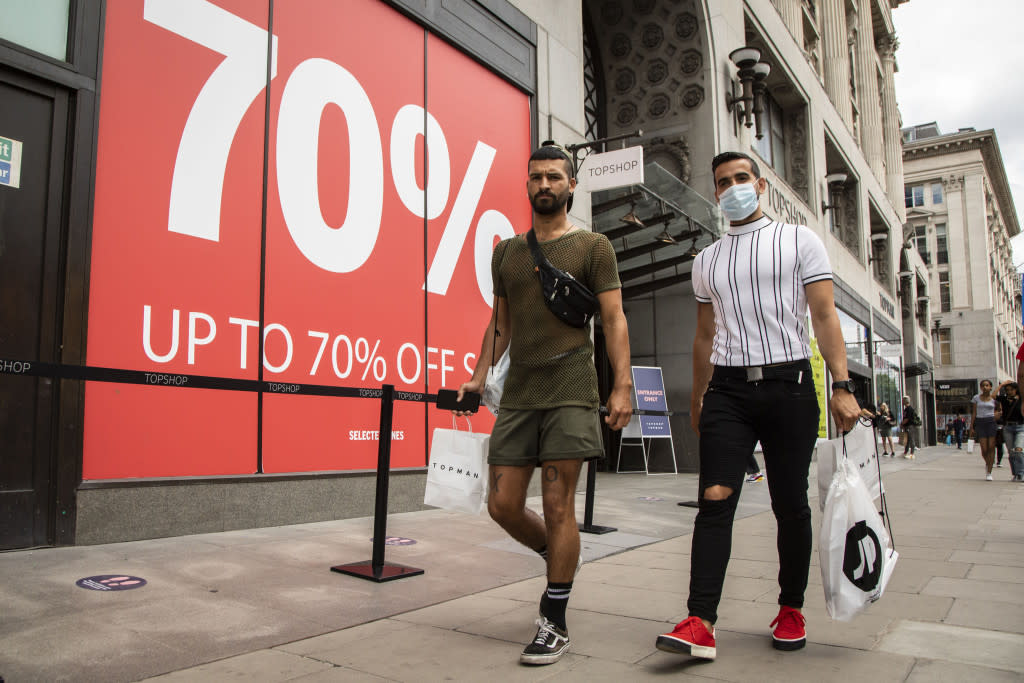Stimulus Checks Spent Primarily on Basic Needs, Essentials

“Back-to-basics” may be the best way to describe current consumer spending, according to Coresight Research. In its weekly report that provides updates on U.S. consumer behavior and sentiment amid the ongoing coronavirus pandemic, the firm found that eligible consumers spent the first round of stimulus checks on essentials such as bill payments and food, inclusive of groceries, dining out and takeout, at 44 percent and 35 percent, respectively.
“Around three-quarters of respondents said that they had received a stimulus check. Bills, food, personal loans, savings and housing were some of the top categories on which these consumers had spent their first check,” authors of the report said.
More from WWD
As for retail, home improvement is the number-one retail category that consumers spent their checks on — and stimulus spending on other discretionary categories was low, according to the firm, with only 6 percent spending on beauty and 5 percent on apparel, footwear or accessories.
Authors of the report explained, “These results reflect that non-food retail categories are a low priority for consumers, which aligns with the high avoidance rate for shopping malls/centers discussed below and the low rates of shopping-related activities that consumers told us they had done in the past two weeks.”
One consistent trend is the avoidance of public places, which remains high. This week saw a slight increase in avoidance from 84 percent to 86 percent, with the avoidance rate remaining high at above 80 percent for the past four consecutive weeks, even in spite of a recent slowdown in new coronavirus cases within several states, all according to the report.
The authors explained, “The proportion of respondents that are currently avoiding shopping centers/malls dropped again this week — some 62 percent said they are currently avoiding these places, versus 64 percent from last week,” adding that the proportion of respondents currently avoiding food-service locations “fell back to the level we saw a month ago.” And public transportation saw the highest decline in avoidance rate this week by five percentage points.
As far as shopping online, the proportion of consumers switching their spending to e-commerce slid slightly again to a new low since peaking in June, authors of the report said.
“Some 67 percent of consumers stated that they are buying more online than they used to this week, versus 69 percent last week. This represents a fall of nine percentage points from the peak of 76 percent in the week of June 24.”
“We also saw declines in the proportions of consumers that are currently buying more online than before the pandemic — across almost all categories.
For more Business news from WWD, see:
Outdoor Brands Talk Coronavirus Impacts
Brick-and-Mortar, Digital Retailers Adjust Strategies in Wake of Coronavirus

